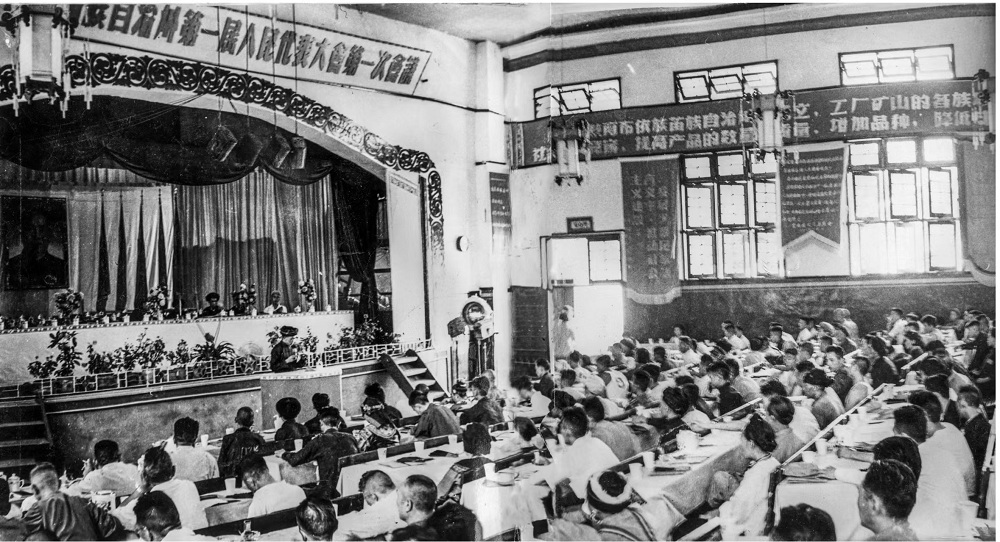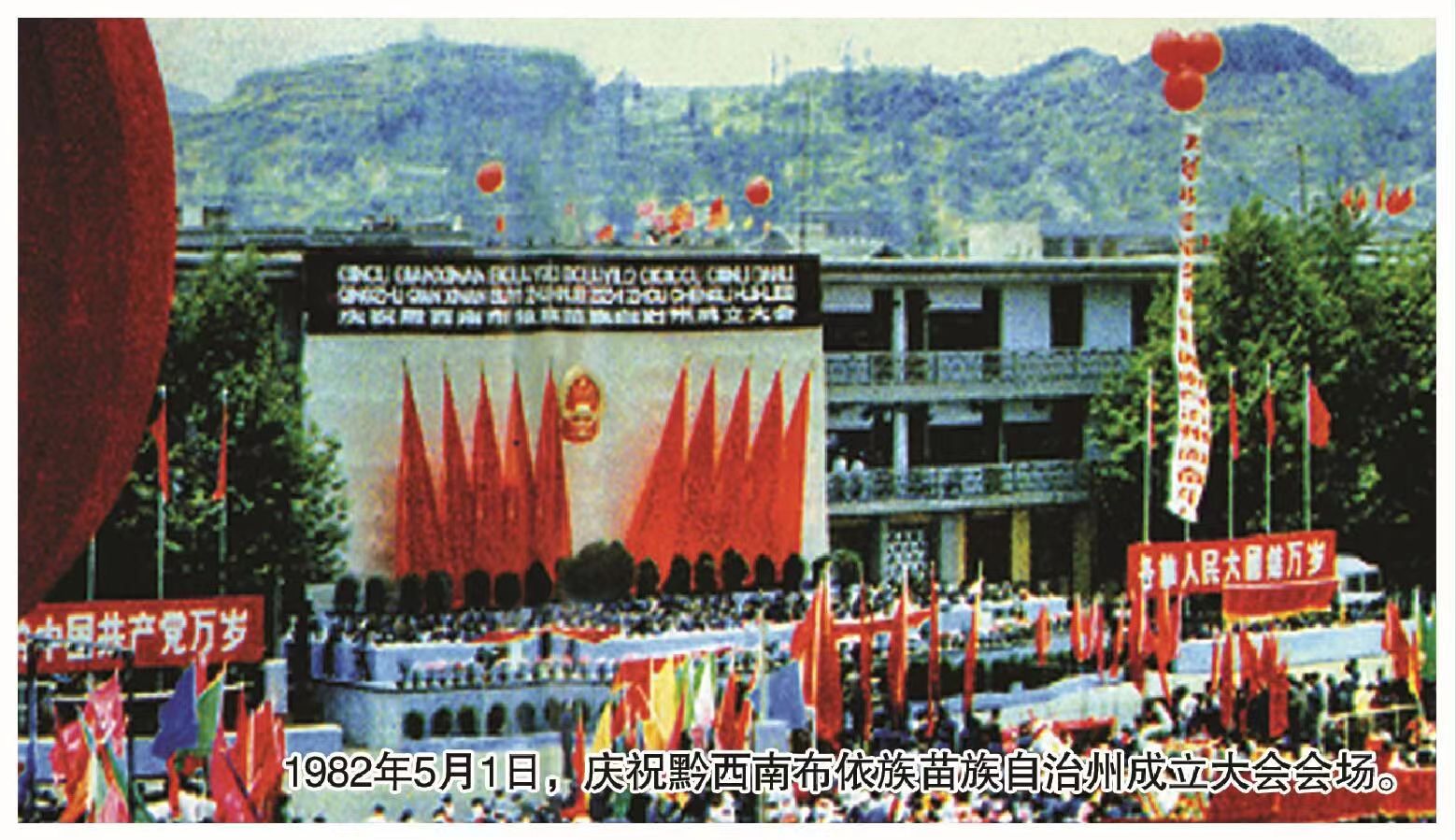[Welcome to the 20th National Congress] "Centennial Party History Red Guizhou" ⑰: The practice of ethnic regional autonomy in Guizhou
Author:Hubei Daily Time:2022.09.28

Editor's note:
With Shi Jianjin and Education and Education. On the occasion of the 20th National Congress of the Communist Party of China, the Party History Research Office of the Guizhou Provincial Party Committee and the Guizhou Daily News Agency jointly launched the "Greats 20 Congress -Centennial Party History Red Guizhou "The series reports, further education and guide the majority of party members and cadres in mind the party's century -old struggle, strengthen their ideals and beliefs, keep in mind the original mission, take the initiative to act, and provide a source of sources for promoting the high -quality development of our province's economy and society, and striving to compose a new chapter in the modern construction of colorful Guizhou. Continuous spiritual support.
Today, a series of reports are launched 列:
The practice of ethnic regional autonomy in Guizhou
After the liberation of Guizhou, the Guizhou Provincial Party Committee and the Provincial Government of the Communist Party of China and the provincial governments in depth the party and the state's policies, laws, and regulations on the autonomy of the ethnic region, and promote the development of various ethnic work.
In 1951, the Kailima Autonomous Region (county jurisdiction), the first ethnic autonomous region of the province in the province's first ethnic autonomous region (now Kaili City). By January 1953, Guiyang, Zhenyuan, Anshun, Dushan, Bijie Bijie had established five districts. The first, second and third districts of Songtao County established a joint national democratic government.

All representatives of the first meeting of the first meeting of the first People's Congress of the Miao and Dai Autonomous Prefecture of Qian southeast and a photo of the first meeting of the People's Congress (Photo of the Party History Research Office of the Qiandongnan State Party Committee)
From 1952 to 1954, with the approval of the government officer officer, the county was withdrawn the county, Danzhai, Taijiang, and Leishan Miao Autonomous Region, Huishui Yi Miao (Buyi Miao) Autonomous Region, Weining County Yi Hui Miao Autonomous Region, and Buyi County, Luodian County autonomous region. In 1955, with the approval of the State Council, the 7 autonomous regions of Weining, Luodian, Huishui, Leishan, Lishan, Danzhai, and Taijiang were changed to autonomous counties, and the township -level autonomous region was changed to ethnic towns.
In April 1956, the State Council approved the withdrawal of three districts: Zhenyuan, Duyun, and Guiding, and set up the Miao and Dai Autonomous Prefecture of the Qian southeast of Qiannan and the Qiannan Buyi Miao Autonomous Prefecture. On July 23, the Miao and Dai Autonomous Prefecture of Southeast Guizhou was officially established. The administrative area was Zhenyuan, Jianhe, Huang Ping, Shi Bing, Sansui, Cen Gong, Tianzhu, Jinping, Majiang, Liping, Rongjiang, and Congjiang 12. The counties and the original furnaces, Taijiang, Leishan, and Danzhai are 4 Miao autonomous counties, with a total of 16 counties under the jurisdiction. On August 8th, the Qiannan Buyi Miao Autonomous Prefecture was formally established. In 14 counties of Wangmo, Book Heng, Anlong, Zhenfeng, Zhenning, Yuan Huishui and Luodian two autonomous counties were changed to the county accordingly. In the same year, Ziyun County was classified as the jurisdiction of the Anshun area, and the Ziyun Miao people Buyi Autonomous County was set up. Mo 3 Buyi Miao Autonomous County and Book of Heng Buyi Autonomous County. In November 1956, Songtao County and Sandu County were canceled, and the Songtao Miao Autonomous County and Sandu aquarium autonomous county was set up. In September 1963, Zhen Ningbu's Miao Autonomous County was established.

In 1956, the first meeting venue of the first People's Congress of the Qiannan Buyi Miao Autonomous Prefecture (Photo Conferry at Qiannan Prefecture Photography Association)
In September 1981, the State Council approved the establishment of the four autonomous counties of the Xingyi area and the four autonomous counties of Anlong, Zhenfeng, Book Heng, and Wangmo. county. On May 1, 1982, the Budi Miao Autonomous Prefecture in southwestern Guizhou was formally established.
In August 1982, the Guling Buyi Miao Autonomous County was established. In November 1984, the Yuping -Dong Autonomous County was established. In November 1987, the 2 Daozhen and Kuchuan Two Gelao Miao Autonomous County was established, the Yinjiang Tujia Miao Autonomous County was established, and the autonomous county of the river family was along the river.

On May 1, 1982, celebrating the establishment of the establishment conference venue of the Miao Autonomous Prefecture in the southwestern Guizhou Tuban (Photo of the History Office of the Southwest Guizhou)
The implementation of ethnic regional autonomy has consolidated and developed the socialist relationship between equality, unity, and mutual assistance, and promoted the development of the province's revolution, construction, and reform. (Author: Xiao Dingxi Unit: Party History Research Office of the Guizhou Provincial Party Committee of the Communist Party of China)
The Hubei Daily client, paying attention to the major events of Hubei and the world, not only pushing the authoritative policies for users, fresh hot information, and practical convenience information, but also launched a series of features such as reading newspapers, newspapers, learning, online interactives.
- END -
Recommendation of Drunk Beauty Passion | Lucun: South Anhui Qiu Yun, such as painting morning scene

Lucun is located in the northern part of Xian County, Anhui Province. It is only 2...
Beijing: Strengthen political supervision and promote the development of the capital in the new era (8)
Video/Snapshot, T_100, F_JPG, M_fast Controls = Controls data-version/ueditor/video/mp4/20220904/1662256919512384.mp4 transcoding = 1 style = width: 400px; Development is the first pri